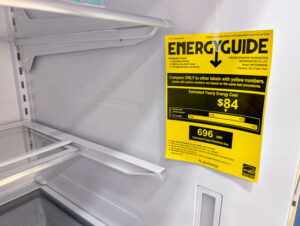Q: How do I use federal tax credits and rebates to upgrade my home?
A: Tax credits and rebates can help bridge the affordability gap to higher-efficiency equipment for your home, allowing you to complete energy efficiency upgrades that can lower your energy use and save you money in years to come.
First, knowing the difference between rebate and a tax credit is important. A rebate is a payment for purchasing or installing a qualified product or home improvement. Depending on how the rebate program is set up, it may be provided at the time of purchase or applied for and received after installation. Check with your local electric cooperative to see if they offer rebates. Typically, the rebate is applied as a credit on your electric bill. In some cases, the rebate is provided as a cash payment to those who complete eligible projects.
A tax credit is a dollar-for-dollar amount that taxpayers can report on their tax documents to reduce the amount of taxes owed. You apply for a tax credit when you file your tax documents, so it typically takes longer to reap the benefits than it does with a rebate.
According to Energy Star, homeowners can qualify for up to $3,200 annually in federal tax credits for energy efficiency upgrades. Federal tax credits are available for heating and cooling system upgrades, including heat pumps, furnaces, central air conditioners, boilers, and geothermal heat pumps. Tax credits for Energy Star rated heat pump water heaters cover 30% of the project cost, up to $2,000. You can also improve your home’s envelope — the portion of the home that separates the inside from the outside — with tax credits for insulation, windows, and skylights.
If an energy efficiency upgrade requires improving the electrical panel in your home, there’s a tax credit for that, too. You can receive 30% of the cost of the panel upgrade, up to $600.
These federal tax credits are available through 2032. You must own the home you’re upgrading, and it must be your primary residence. Federal tax credits only apply to existing homes, not new construction, in the United States.

The Inflation Reduction Act of 2022 provides support for the clean energy transition in multiple ways. According to its website, the Colorado Energy Office is currently developing the Home Energy Rebate programs established in the IRA. State of Colorado Heat Pump Tax Credits and Home Energy Federal Tax Credits are currently available. Visit the Colorado Energy Office’s website at energyoffice.colorado.gov/hptc for more information about available tax credits.
Additional energy efficiency rebates might also be available. More than half of U.S. states require energy efficiency programs for residents, according to the American Council for an Energy-Efficient Economy. These programs can help people save money on their electric bills and help states meet climate goals, reduce system costs, and improve the electric grid.
I have had the privilege of working in energy efficiency rebate programs for many years and have seen the benefits of these programs firsthand. Rebate and tax credit programs can make upgrades more affordable — helping people save money and improve the overall comfort of their homes.
Miranda Boutelle is the chief operating officer at Efficiency Services Group in Oregon, a cooperatively owned energy efficiency company.









